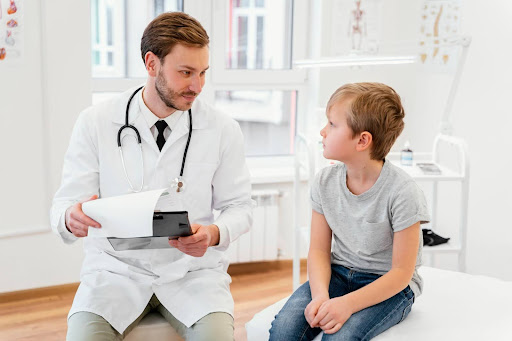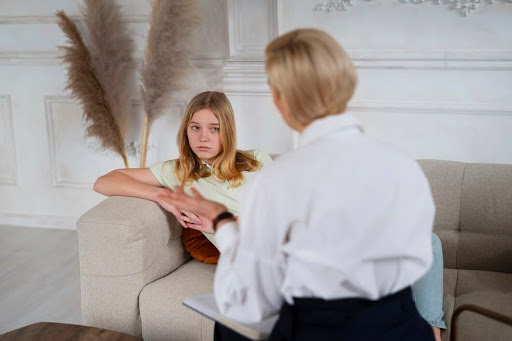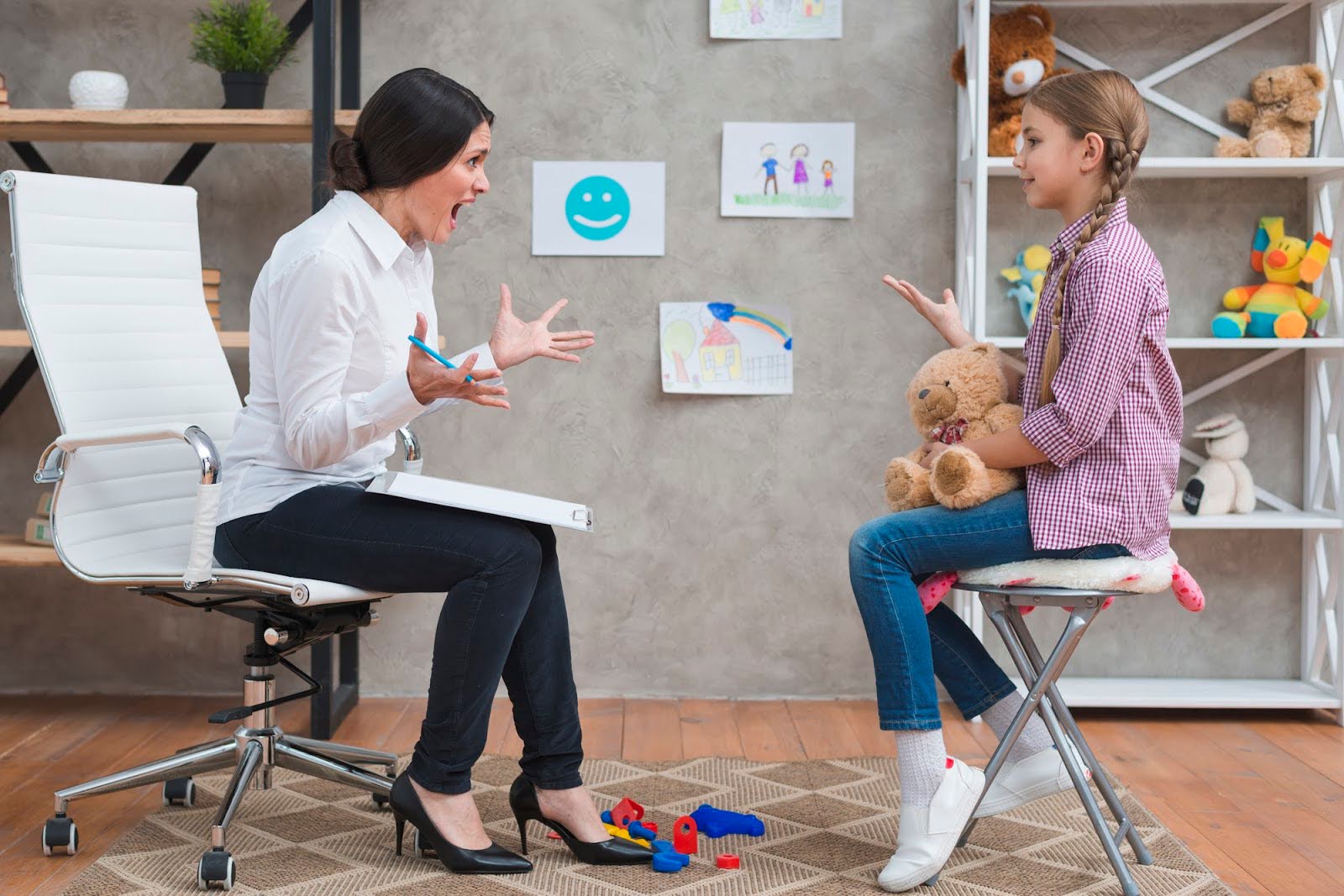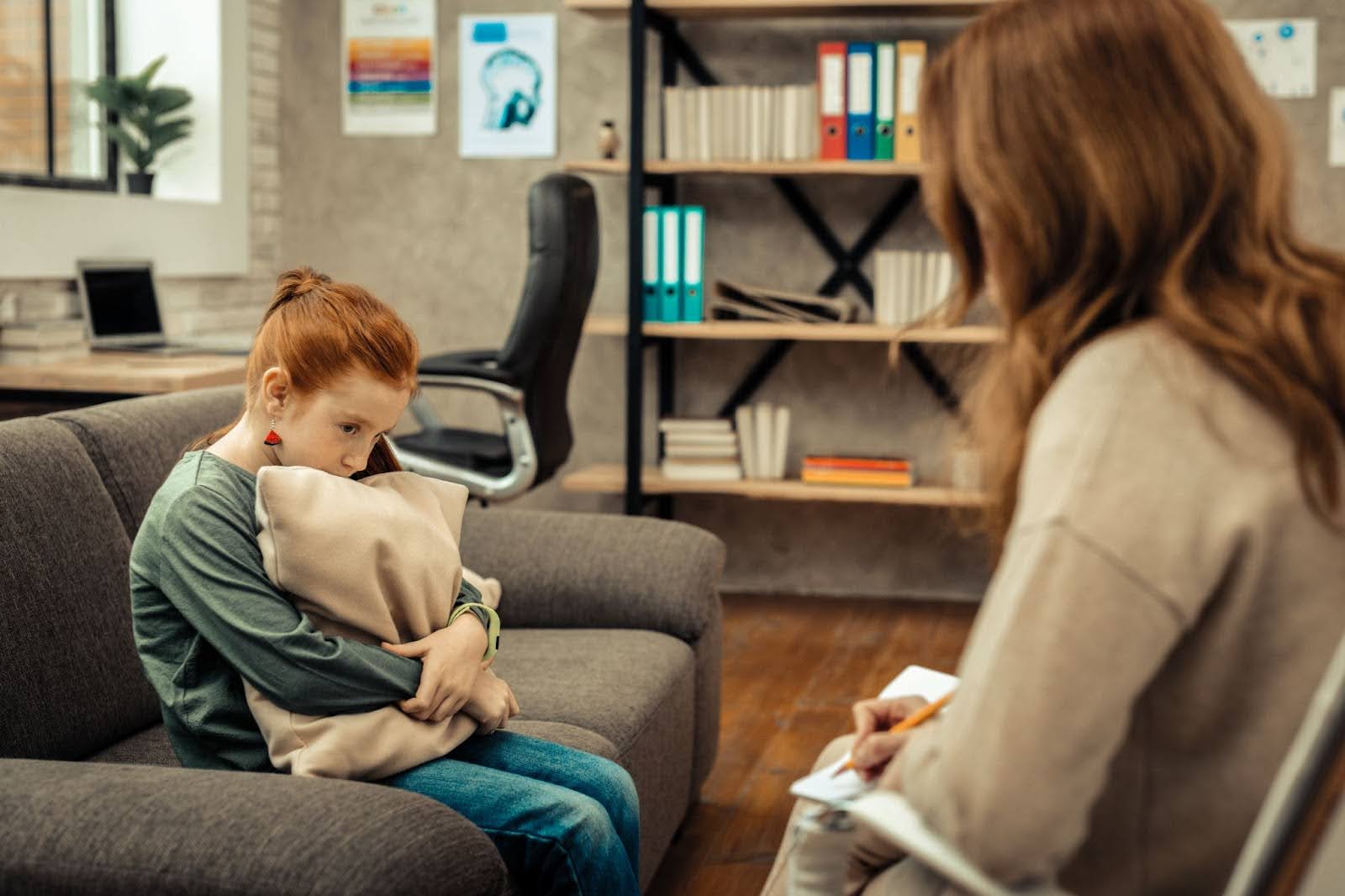Part 1
The main causes of death in adolescence are traffic accidents, interpersonal violence, and drug use. All these deaths can be prevented by demonstrating safe behavior. Psychosocial assessment and counseling of adolescents by pediatricians and family doctors can help detect and measure healthy and risk behavior.
Counseling is a process that provides support, when the counselor and the patient together study the problem, analyze it, try to find possible solutions, and in the end, the adolescent clarifies their feelings and thoughts, and makes more weighty decisions on their own. It is very important to take a non-directive approach to counseling, to reach an understanding of the adolescent’s needs, to agree on the goals of the counseling, to help the adolescent achieve those goals and to reach an agreement at the end of the counseling process. The specialist who implements the consultation must demonstrate effective communication skills which include active communication, open questions, and provide information.
Active communication creates a reliable and safe atmosphere, shows that the doctor listens carefully and understands the teenager, and is ready to provide support: The doctor doesn’t criticize, doesn’t ask “why”, and helps the teenager to understand their feelings.
During active listening, the doctor looks into the teenager’s eyes, slightly tilts the body in the direction of the teenager, regularly says “it’s understandable”, “continue”, and “yes”: Active listening includes positive verbal reinforcement, encouragement, questioning, reflection of feelings, clarification, and summarization.
Open-ended questions help the doctor and the adolescent to understand each other correctly and allows the adolescent to formulate the answer on their own. The questions are aimed at starting or continuing the conversation, obtaining information about the teenager, understanding the adolescent’s feelings, helping the adolescent understand their own feelings and problems, and suggesting new approaches to solving the problem.
Questions can be the following: “How often does this happen?”, “How do you feel at that time?”, “What do you think can you discuss these problems with friends, parents, classmates?”, “What do you think about?”, etc. Open-ended questions are used at the beginning of the consultation, during the consultation to encourage, and to focus the visitor’s attention and emotions.
Providing information: Adolescents need accurate and reliable information. It is necessary to provide short but understandable information, avoiding medical or psychological terms, using pictures if possible.
Sometimes it is necessary to ask the adolescent to repeat the information you have provided, to be sure that they understood you.
The word “should” should be replaced with other words: “it is desirable”, “it would be good”, “it is preferable”, or “the situation will change if… ”.
Part 2
Stages of counseling
When conducting counseling, it is necessary to take into account the age of the adolescent, the stage of development, the presence of chronic diseases/disabilities. Understand whether the visitor came on their own or under the will of their parents. In the latter case, difficulties are possible. The goal of counseling is to encourage communication about the problems that concern the adolescent; to deeply understand the adolescent during communication; to convey the direction that the visitor solves their problem themselves; to give direction to further work.
Counseling takes place in several stages.
- First stage: getting to know the visitor, establishing contact. It is very important to establish a good counseling environment.
- Second stage: collecting information, formulating a counseling hypothesis through questions. During this stage, the main problem of the adolescent, the disturbing situation, should be revealed.
- Third stage: determining possible solutions to the problem, agreeing on actions. The doctor and the adolescent come to a mutual understanding, a common perception of the problems. Then a general analysis of the situation takes place.
- Fourth stage: implementing the actions developed by the adolescent, evaluating the results. The doctor’s goal is to help the adolescent determine the desired changes in the situation and make an informed choice. The person responsible for the choice is themselves, the adolescent. The doctor helps the visitor reconsider their attitude towards the problems and find a way out of the situation, analyzing the consequences.
When the choice is made, the doctor helps the adolescent create an implementation plan. After a certain break, they meet again, the adolescent tells about what has been implemented, if necessary, the implementation is corrected.
The consultation usually lasts from 30 – 45 minutes to 1.5 hours.
Basic principles of working with adolescents
The basic principles of working with adolescents are confidentiality and effective communication.
Confidentiality: Confidentiality is the cornerstone of providing a friendly service to adolescents. There are two levels of confidentiality.
- First: information and personal data about the adolescent, as well as any other patient, are not accessible to outsiders.
- Second: when conducting a consultation, it is necessary to inform the adolescent that the information will be transferred to other persons – parents, teachers, guardians – only with the permission of the adolescent. It is also necessary to take into account national and cultural peculiarities as well as country legislation.
Confidentiality has its limitations:
- risk of suicide or murder,
- sexual abuse, sexual violence, risks of violence,
- drug use,
- life-threatening conditions, the need for hospitalization,
- the adolescent is a victim of violence or is a perpetrator of violence against others
- the adolescent, as well as others, is in danger.
The presence of confidentiality increases the likelihood of further visits.
When communicating with an adolescent, it is necessary to avoid
- Medical terms.
- Making assumptions during counseling.
- Telling the adolescent what to do.
- Trying to be a “friend”: the adolescent needs a specialist.
- Focusing on negative behavior.
- Asking unnecessary, personal questions.
- Giving advice
- Providing examples from personal life
- Providing information without the adolescent’s consent.
Counseling is carried out in the following way:
- When scheduling a meeting with an adolescent, do not be late, do not keep the adolescent waiting. Start on time, inform them about how long the consultation will last.
- Introduce yourself, greet the adolescent, ask for their name, how to address them.
- First greet the adolescent, then the family members, if they visited together.
- Offer the adolescent to choose a place to sit. In most cases, the choice of a place to sit has diagnostic significance – in the center of the sofa, at the end.
- Make sure that the counselor and the adolescent are not separated by a table, they are sitting opposite each other.
- Choose a comfortable position when sitting.
- Provide information about confidentiality.
- Thank the adolescent for the visit.
- Try to help the adolescent explain the purpose of the visit by asking questions.
- Use open-ended questions.
- Give the teenager the opportunity to tell everything that worries them.
- Follow the adolescent’s behavior and non-verbal cues.
- Monitor the teenager’s behavior and nonverbal cues.
- Show that you understand them, provide support, calm them down if necessary.
- Keep quiet from time to time, but not for too long.
- Remember that the adolescent can hide the truth, not answer your question. Changing the question, after a while, you should try to ask again.
- Discuss or criticize the activity, not the adolescent.
- When communicating, actively listen to the adolescent, show empathy, and be interested in the teen.
- Emphasize positive trends, encourage with words.
- Emphasize successes, especially in overcoming difficulties.
- Accept the adolescent’s fears, doubts.
- Reassure the adolescent that they have some control over their life and can make their own decisions, act on them and analyze their consequences.
- Involve the adolescent in decision-making.
- After providing information, provide literature if possible.
- Ask the teenager to tell you what they understood from what you said.
- Ask the teenager how they feel.
- After completing the consultation, make an appointment for the next meeting.
Part 3
It is very important to conduct psychosocial assessment during adolescent visit at least once a year.
The HEEADSSS assessment currently well-recognized in the world is an English acronym that includes the following points:
- H – home
- E – eating behaviour
- E – education, employment
- A – activities
- D – drugs
- S – suicide
- S – sexuality
- S – safety
Depending on the patient’s complaints and problems, information is collected in full or individual elements of the assessment are used. When working with adolescents, the assessment of the specified questions is as important as the clinical examination. It allows to identify the root causes of the complaints presented, to reveal hidden complaints, to assess the existing psychological and social problems, related to health and risky behavior.
During the assessment, general, less sensitive questions are first touched upon, then a transition is made to more vulnerable questions. The psychosocial assessment can last about 20 minutes, it is preferable to carry it out when the adolescent is in a relatively calm state of mind. It is necessary to explain that the answers to the questions will help to correctly assess the adolescent’s health.
When conducting the assessment, it is necessary to speak clearly, ask open-ended questions, avoid medical terms, do not interrupt the adolescent, and create an atmosphere of trust. It is desirable that adolescents talk to the doctor separately from their parents.
The following questions are discussed according to the questionnaire:
Home/Family
- Where do you live? Who do you live with? Do you have your own room?
- Do you have a sister/brother?
Education/Work
- Do you go to school?
- What grade are you in? What subjects do you like? How do you study?
- Do you like school?
- What do you like and dislike about your school/class?
- What do you want to study?
- Has your academic performance changed recently?
- What do you think of your classmates?
- Do you fight with your friends at school, how often?
Eating habits
- Do you eat breakfast in the morning?
- How do you feel about your body?
- Have you tried to lose weight recently? How many times have you tried?
- What do you think is considered healthy food?
- What do you like about your body and what do you not like?
- How often do you exercise to lose weight?
Activities/Leisure time
- How do you spend your free time?
- How do you spend my free time with your family?
- How do you spend my time with your friends?
- Do you do any sports? How often?
- Do you participate in any groups?
- Do you meet up with your friends outside of class?
- How often do you watch TV during the week?
- How much time do you spend on your computer/phone?
- Are you registered on social networks? How much time do you spend on social networks? For what purpose?
Harmful habits: cigarettes, drugs
- Does anyone in your family smoke? How often?
- Is it normal for your family to drink alcohol at parties?
- Have there ever been problems with alcohol or tobacco use in the family?
- Do any of your friend’s smoke?
- Have you ever used cigarettes or alcohol?
- Has it ever happened that you forgot what you were doing or where you were after drinking alcohol?*
Sexuality
- Ask a teenager under 14 about physical changes and how they feel about them.
- Has their menstrual cycle stabilized? Are you informed about hygiene?
When discussing sexuality, it is necessary to start with less sensitive questions, for example:
- Are any of your friends in love?
- Is your friend dating/seeing someone?
- Have you ever been in love?
- Do you have a boyfriend/girlfriend? Do you know how to protect yourself from unwanted pregnancy and STIs? Do you know the rules for using condoms?
- Are you aware of STIs and the signs of STIs?
- Are you aware of contraceptive methods?
- Have you talked to an adult about sexual relations?*
Safety/security
- Do you wear a helmet when riding a bicycle/motorcycle?
- In a car do you use a seat belt when you are in a car?
- Have you tried to resolve arguments without fighting?
Depression/suicide
- Have you been more emotional, crying lately?
- Have you been more tired lately, don’t want to find anything to do?
- Have you ever felt lonely?
- When you feel sad or lonely, who do you turn to? What do you do during that time?
- Have you ever felt so lonely that you thought about suicide?
As a result of the assessment, existing problems are identified, and the teenager is referred to a psychologist if necessary.
Hope this helps!
Marina Melkumova, MD
Adolescent Health Program Coordinator
“Arabkir” Medical Centre-Institute of Child and Adolescent Health
Co-Principal Investigator, HBSC Armenia
Principal Investigator, COSI Armenia




